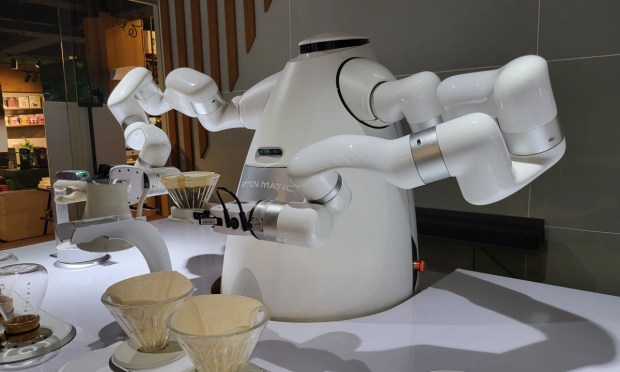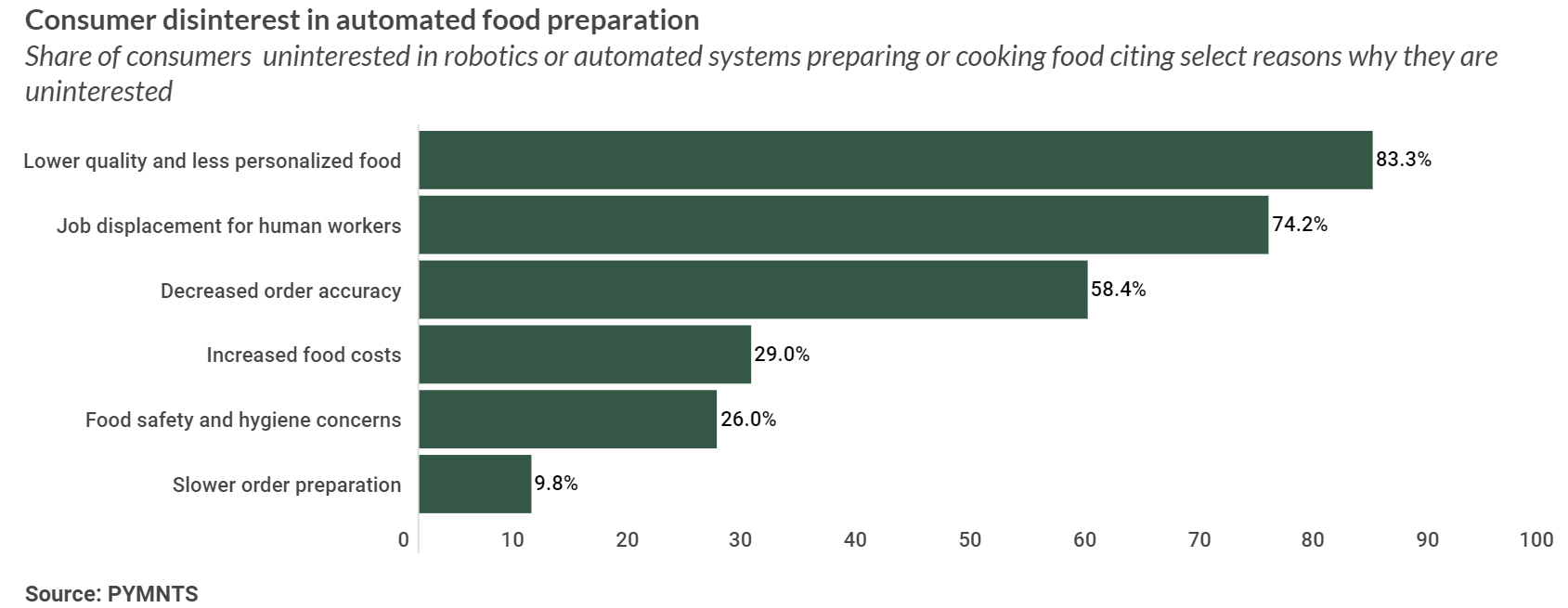Food Chains Tap Robots to Streamline Meal Prep Amid Quality Concerns

From robotic grills, faster blenders and drone delivery, restaurants across the globe are turning to automation to tackle rising labor costs, improve efficiency and boost revenues.
Major quick-service restaurant (QSR) chains have also embraced the trend, with Chipotle announcing this week (Oct. 3) that it had teamed with automated food service platform Hyphen to test a “cobotic” (short for “cooperative robotics”) “digital makeline.”
The automated system moves entrées through the bottom makeline, enabling Chipotle workers to then use the top makeline to create burritos, tacos or quesadillas for the same digital order.
“Approximately 65% of all Chipotle digital orders are bowls or salads, so the cobotic digital makeline has the potential to free up more time for employees to service the front makeline and deliver exceptional hospitality, while simultaneously increasing capacity for digital orders during peak periods,” the company said in a news release, per PYMNTS.
The news follows an earlier Chipotle partnership with food automation company Vebu to test an avocado processing robot dubbed Autocado.
Commenting on the adoption of advanced technologies in the restaurant industry, Curt Garner, Chipotle’s chief customer and technology officer, told PYMNTS in a recent interview that the fast casual chain sees opportunities for more automation in food prep, among other areas.
“We see potential in leveraging AI to help our managers be more precise in the amount of food they’re prepping for their restaurants. Anything we can do to help our teams more easily recover from a strong sales day is an area we’re prioritizing,” Garner said.
This comes as a newly published PYMNTS Intelligence report reveals that QSRs estimate that 51% of tasks will be automated by 2025, with full-service restaurants expected to automate 27% of tasks.
The report cites Dutch startup Eatch, which has launched a fully automated robotic kitchen capable of producing up to 5,000 meals per day, as an example of how robots are being used to handle the entire meal-production process, from cooking to plating to pot cleaning.
Data from a collaboration between PYMNTS and Ingo Money reveals that 75% of restaurant operators plan to adopt technology this year to address labor and cost challenges. Furthermore, 90% of restaurant owners view increased back-of-house automation as a way to free up time for more important tasks.
Consumers Skeptical of Robot Food Prep
Despite the growing popularity of food automation, consumers have mixed feelings about the trend.
PYMNTS Intelligence shows that 65% of consumers are not interested or only slightly interested in partaking in robotic or automated food preparation.
This is because the majority of consumers (83%) believe that food prepared by robots would be of lower quality and less personalized compared to food prepared by humans. Additionally, 74% of consumers express concerns about automation leading to job losses for human workers. Consumers also doubt automation’s ability to reduce costs, as they believe technology will come at a price.

Similarly, research from PYMNTS’ exclusive study “Connected Dining: The Robot Will Take Your Order Now” shows that two-thirds of diners are uninterested in robotics or automated systems preparing or cooking food, making the introduction of back-of-house automation a major challenge for customer loyalty.
To continue to attract and retain customers, industry players will need to carefully consider consumer sentiment and find a balance between automation and a human touch to ensure customer satisfaction and loyalty in the long run.

